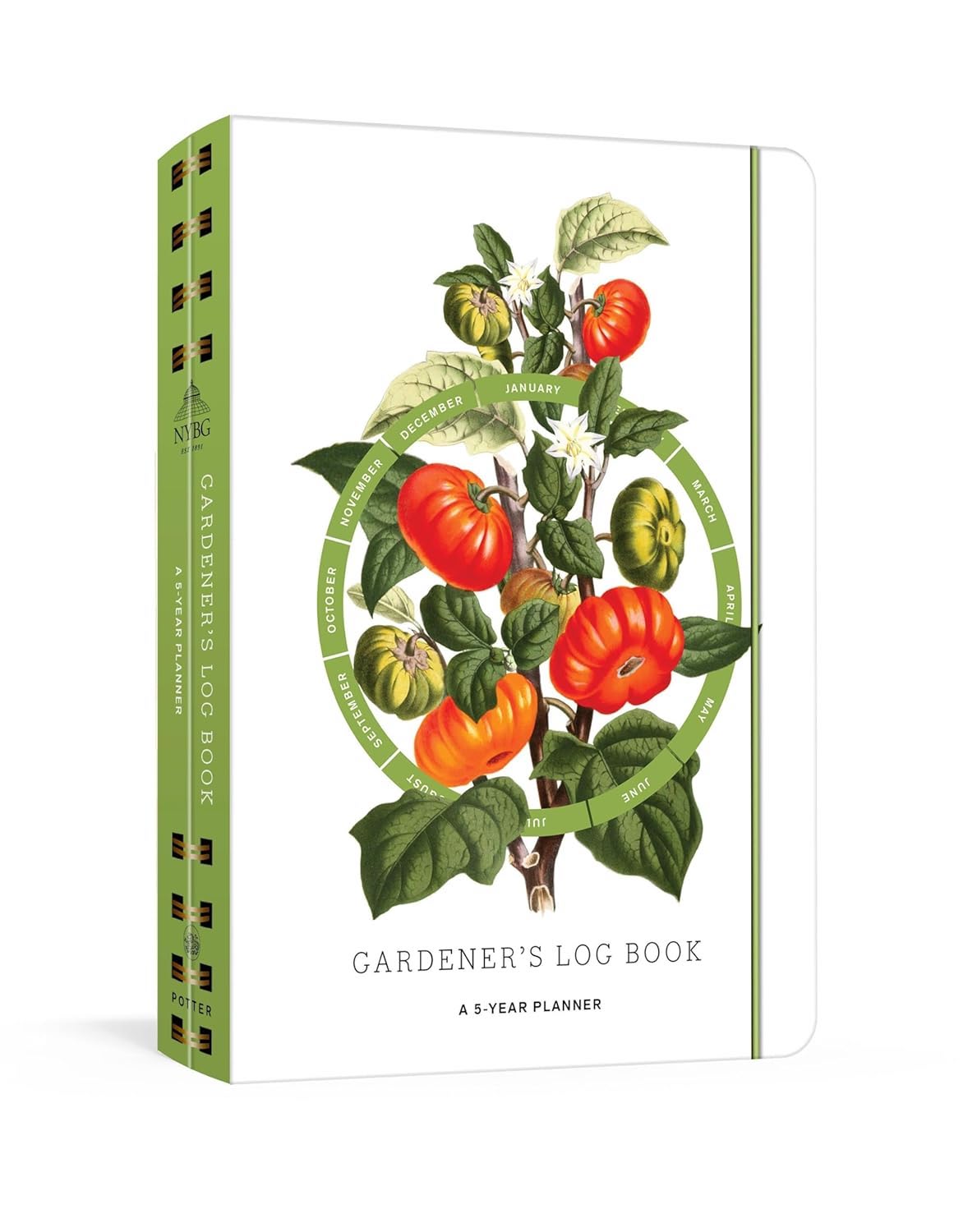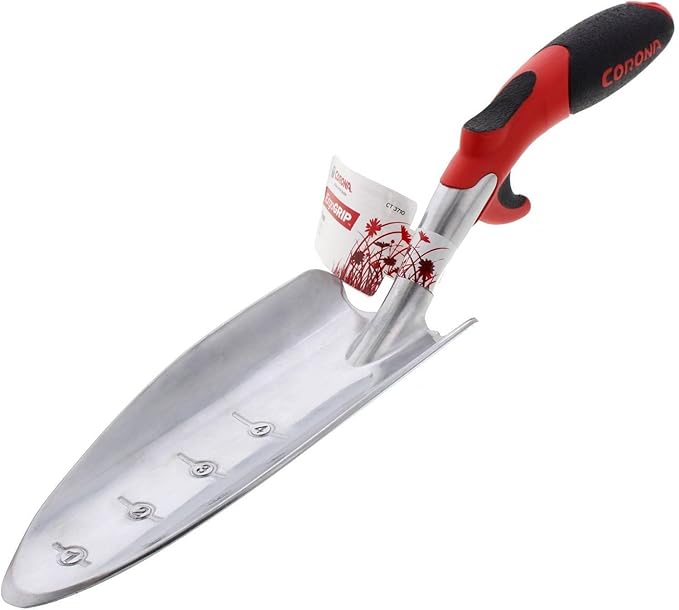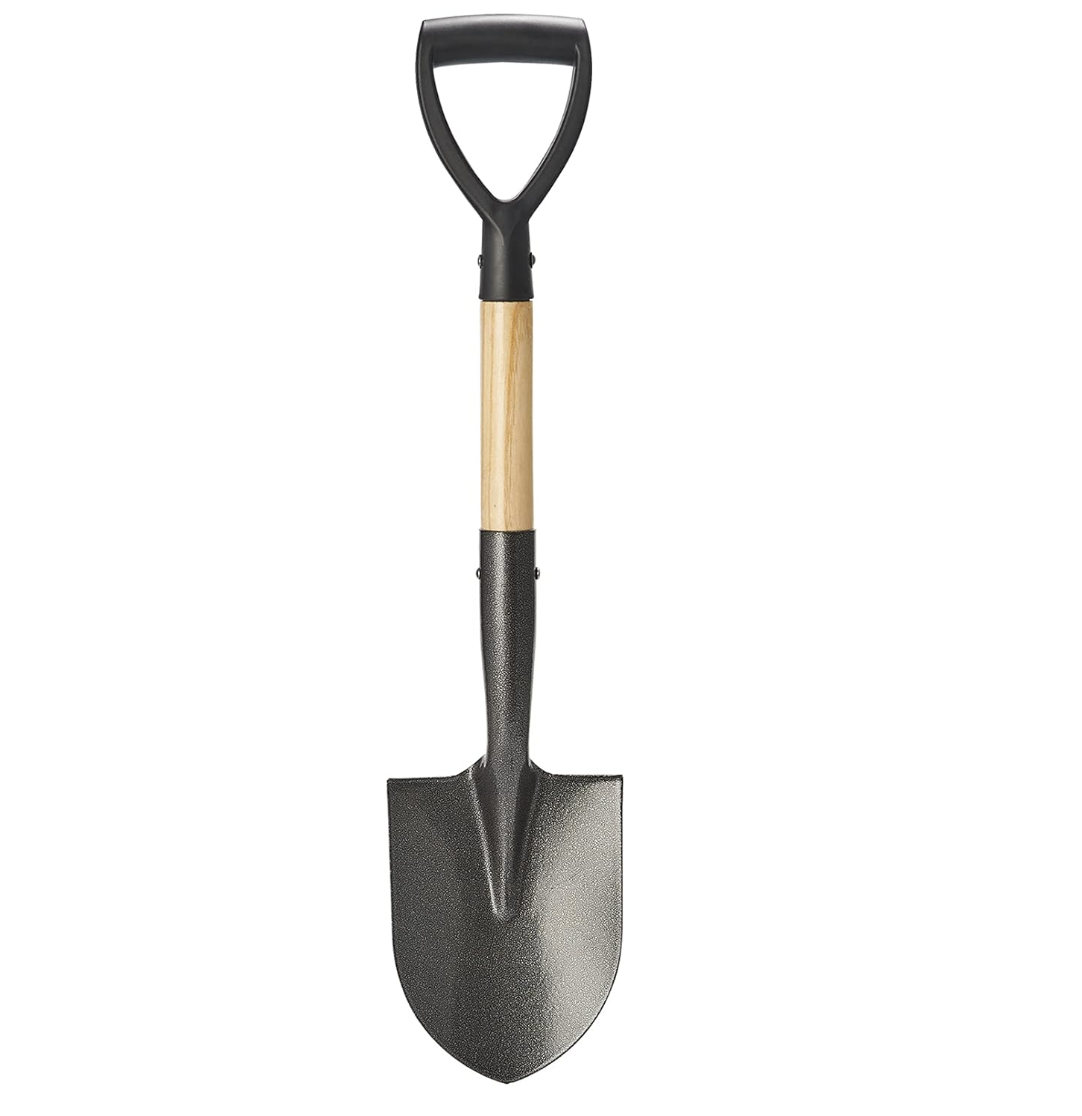
Nineteen eighty-six was a wonderful gardening year for me in Connecticut. By mid-July, every inch of my perennial border was in bloom, and I was thrilled. It was just what I had been working toward for 20 years—a summer garden absolutely filled with flowers.
For one glorious month, my heart sang. But even as I rejoiced to see so many daylilies and daisies in bloom all at once, I began to realize that there was more to a beautiful garden than masses of flowers. Although the border was a sea of color, it lacked definition. Like the soft prettiness of extreme youth, its charms were fleeting because it had no form or substance.
Looking at the bed with a more critical eye, I could see it needed structure. The overall effect was colorful but flimsy, and there was too much soft, arching daylily foliage. I also noticed that most of the plants were of a similar height. While the sloping site afforded an element of interest, the measured rise from front to back was monotonous. There were no surprises—no highs or lows or changes in pace. Nor was there enough variety among the flower shapes. They were either flat or trumpet-shaped and all about the same size.
So I began making gradual changes. I started thinking in terms of the underlying shapes of the plants themselves, like cones, globes, mounds, spikes, fountains, and mats. I also started to seriously consider how the shapes related to one another. For example, plants that are strongly three-dimensional contrast with soft clouds of bloom, while spiky foliage provides an antidote to an excess of arching foliage.
Cones

Broad at the base and tapering to a point, cone shapes carry weight in a garden and provide stability.
Evergreen shrubs and dwarf trees
- Arborvitaes (Thuja occidentalis ‘DeGroot’s Spire’ and ‘Smaragd’)
- Dwarf Alberta spruces (Picea glauca var. albertiana ‘Conica’ [photo right], ‘Gnome’, ‘Alberta Globe’)
- Dwarf blue spruces (Picea pungens ‘Fat Albert’ and ‘Glauca Compacta’)
- Juniper (Juniperus communis ‘Compressa’)
Some shapes add weight to a garden’s design
My stirrings of dissatisfaction about the monotony of my perennial border coincided with a new phase in my gardening life. I had recently met a number of younger garden-makers in Connecticut, among them Peter Wooster and his gardener, Gary Keim. Quite apart from being enchanted by them both, I was tremendously impressed with the garden they were creating. It had just what mine lacked: a sturdy framework of shrubs and evergreens to support a mind-boggling collection of annuals, perennials, and tender exotics.
When I asked Peter how he went about arranging the plants, he offered the following tip: If all the plants are about the same size, you need something big to hold it all down. You need height in the middle of the bed from evergreens or shrubs. Then, each bed has corners that should be addressed.
Globes

Globes contrast well with spikes and fountains. Shrubs that do not grow naturally into globes can be pruned into this shape.
Deciduous shrubs
- Barberries (Berberis thunbergii cvs.)
- Spiraeas (Spiraea japonica ‘Anthony Waterer’ and ‘Little Princess’)
Evergreen shrubs
- Arborvitaes (Thuja occidentalis cvs.)
- Boxwoods (Buxus microphylla ‘Winter Gem’ and ‘Wintergreen’; B. sempervirens ‘Variegata’ and ‘Suffruticosa’ [photo right])
- Holly (Ilex glabra ‘Compacta’)
Perennial blooms

I learned from him that weight exists only in the mind and eye of the beholder, but its presence or absence can be the making of a garden. A compact, well-proportioned evergreen shrub anchors the lighter elements in the composition. Solid geometric shapes like cones, globes, and mounds carry weight. Dark foliage seems heavier and more substantial than light foliage, and large leaves seem weightier than small ones, unless the small ones are dense, uniform, and numerous, as in needled evergreens.
While our gardens are very different in layout—Peter’s is rectilinear; mine flows with the contours of the land—the same principles apply. Inspired by his example, I sacrificed some of my beloved daylilies to a dwarf Alberta spruce (Picea glauca var. albertiana ‘Conica’). Its short dark-green needles packed into a neat cone shape added weight to the border. I also added vertical fountains of tall ornamental grasses and a few bold, high-rise perennials to break up the groups of false sunflowers (Heliopsis helianthoides).
One end of the border had long since been “addressed” by the substantial presence of an old threadleaf Japanese maple (Acer palmatum var. dissectum ‘Crimson Queen’). During the growing season, its woody skeleton is covered with a mass of lacy mahogany-red foliage. This dark mound completes the border just as a period completes a sentence. At the opposite end, I added another dark mound, a fast-growing purple smoke bush (Cotinus coggygria ‘Purple Robe’) to balance the maple. By cutting the smoke bush nearly to the ground every spring, the new growth reaches only about 8 feet high instead of 15 feet and retains its color. Now, the two dark-leaved shrubs hold the border within their embrace, like a pair of bookends.
Although the changes I made were modest, they transformed the garden. It became interesting to look at even when nothing was in bloom. Instead of a boring straight line, it had a horizon with ups and downs—vertical forms and low, crouching forms. The addition of the grasses and shrubs provided variety in terms of value as well as form. The green-and-white-striped grasses and the variegated leaves of a redtwig dogwood (Cornus alba ‘Elegantissima’) supplied highlights; the red- and purple-leaved shrubs and the Alberta spruce, contrasting dark accents.
Mounds

Mounds carry weight but are softer and lower in profile than globes.
Shrubs
- Boxwoods (Buxus sempervirens cvs.)
- Threadleaf Japanese maple (Acer palmatum var. dissectum ‘Crimson Queen’; photo right)
Perennials
- Bowles’ golden sedge (Carex elata ‘Aurea’)
- Fountain grass (Pennisetum alopecuroides )
- Japanese forest grass (Hakonechloa macra ‘Aureola’)
- Hosta spp. and cvs.
- Silvermound artemesia (Artemesia schmidtiana )
A plant’s form can be two- or three-dimensional
Meanwhile, the lessons I had learned from Peter’s garden were being incorporated into the two new beds I began working on in 1990. These beds divide the “civilized” part of the garden from the wilder part and have an opening between them. To address the ends of the beds on either side of the opening, I planted a pair of Alberta spruces and matching clumps of fountain grass (Pennisetum alopecuroides) to give them weight. The forms are distinct and highly contrasting—the evergreens solid and pyramidal; the grasses, despite their name, soft and mound-shaped.
Lynden Miller, who was an artist long before she became a designer of public gardens, once said, “If you made a brand- new garden and put in a couple of vertical dwarf evergreens and a couple of rounded ones, you’d be halfway there because you’d have given it geometry.” The trick is to fathom nature’s underlying geometric forms and to deploy them effectively. Form, of course, can mean either the three-dimensional shape—volume—or the two-dimensional outline of a plant. Both come into play in the design of a garden.
Spikes

Spearlike foliage and spirelike flowers lift the eye skyward.
Perennial foliage
- Blue oat grass (Helictotrichon sempervirens)
- Feather reed grass (Calamagrostis × acutiflora ‘Stricta’)
- Hedgehog agave (Agave stricta; photo right)
- Iris spp. and cvs.
- Yucca filamentosa cvs.
Perennial blooms
- Blazing stars (Liatris spp. and cvs.)
- Ligularia (Ligularia stenocephala ‘The Rocket’)
- Lupines (Lupinus cvs.)
- Red hot pokers (Kniphofia cvs.)
- Snakeroot (Actaea racemosa; photo below)
- Speedwell (Veronica spp. and cvs. )

What delights the eye about a range of hills or a distant cityscape is the variety of pleasing forms silhouetted against the sky. The same is true in a flower bed. It was the skyline of my garden that improved so much with the addition of shrubs and other tall plants to give it changes in height.
Within a border, shapely perennials like Sedum ‘Autumn Joy’ provide satisfying three-dimensional forms. I sometimes shape others with a bushy habit into globes or mounds. Threadleaf coreopsis (Coreopsis verticillata ‘Golden Shower’) with its forest of stiff, upright stems and fine, dense foliage lends itself to this treatment. So does Kalimeris integrifolia. Its woody stems are lavishly clad in small-toothed leaves and covered with little white daisies. Trimmed into a globe in the spring, it holds its shape throughout the season.

Fountains
Tall plants that are relatively narrow at the base and flare outward at their tops add grace and elegance to the garden.
Perennials
- Ornamental grasses (Miscanthus sinensis cultivars: ‘Variegatus’ [photo right], ‘Morning Light’, ‘Silver Arrow’, ‘Purpurescens’, ‘Gracillimus’, and ‘Zebrinus’)
- Tall daylilies (Hemerocallis altissima hybrids: ‘Statuesque’, ‘Autumn Minaret’, and ‘Challenger’)
Varied shapes add strong lines as well as form
Good design relies on line as well as silhouette and form. Spears of foliage and flower heads that rise like spires provide high points and are useful to contrast with mounds and globes. In my sunny borders, fuzzy wands of pinkish-purple gayfeather (Liatris spicata ‘Kobold’) and pudgy spikes of dusty-purple Agastache foeniculum serve that purpose. In the shade, the tall white flower spikes of Hosta ‘Royal Standard’ are attractive, rising out of their mounds of lush foliage, with airy white wands of snakeroot (Actaea racemosa) waving overhead.
Besides being valuable for their height, tall linear plants like the snakeroot contribute grace and elegance to a flower bed. And the clean lines of yuccas, irises, and certain upright grasses offer refreshing relief from arching foliage or too many plants with a billowing habit.
Mats
Mat-forming plants lie low and tie a garden to its site.


Evergreen shrubs
- Low, spreading junipers (Juniperus squamata ‘Blue Star’ (photo above) and J. horizontalis ‘Wiltonii’)
Perennials
- Candytuft (Iberis sempervirens)
- Lambs’ ears (Stachys byzantina; photo right)
- Lamium maculatum ‘White Nancy’, ‘Beacon Silver’, ‘Aureum’, and f. album
- Lysimachia nummularia ‘Aurea’
- Thymes (Thymus spp. and cvs.)
In the winter, line is the name of the game. At this time of year, I really appreciate ornamental grasses. Unless a torrential rain fells them first, Miscanthus sinensis ‘Morning Light’, maiden grass (M. sinensis ‘Gracillimus’), zebra grass (M. sinensis ‘Zebrinus’), switchgrass (Panicum virgatum), and blue oat grass (Helictotrichon sempervirens) all stand up to be counted in the winter. But the queen of the border in winter is the threadleaf Japanese maple. Bare, her beautiful zigzag branches cast interesting shadows; trimmed with ridges of snow, they are breathtaking.
The evergreens, of course, come into their own at this time of year. The same Alberta spruces that steadied the flower beds in summer are the stars of the winter border. Solid and reassuring, they stand sentinel at each end of the new beds. The nearby grasses provide a contrast in form and color. In one bed, a globe of variegated boxwood and a neat, twiggy ball of barberry (Berberis thunbergii ‘Golden Nugget’) furnish the edge. A smooth stone, unearthed when I dug the bed, brings the number of rounded forms to three.
This year there will be two new boxwood globes, very small but not to be dismissed. One day, they will take their places at each end of the matching borders with the Alberta spruces and mounds of fountain grass in a trio of satisfying shapes.
Mimic the natural skyline with the placement of plants
One of the author’s borders reflects the same natural contours as a landscape scene in Columbia County, New York.
Sydney Edison is the author of several books, including The Self-Taught Gardener and The Gardener’s Palette: Exploring Color in the Garden.
Fine Gardening Recommended Products

Gardener's Log Book from NYBG
Fine Gardening receives a commission for items purchased through links on this site, including Amazon Associates and other affiliate advertising programs.

Corona E-Grip Trowel
Fine Gardening receives a commission for items purchased through links on this site, including Amazon Associates and other affiliate advertising programs.

Corona® Multi-Purpose Metal Mini Garden Shovel
Fine Gardening receives a commission for items purchased through links on this site, including Amazon Associates and other affiliate advertising programs.




















Comments
Thank you for this article! We just moved into our forever home and I've been drawing out plans and gathering inspiration but have been unable to find any in depth design theories to help me make educated decisions for plants to buy and how to use them to create a visually beautiful space.
I too am in love with flowers and a lot of color, but our front yard is mostly shade; it actually helped me focus on simplifying the colors and focus on shapes and flow. I've been drawing out plans and moving plants a little, and this week I'm digging out a new bed and planting the "foundation " plants and ground cover, with time I'll add in new elements, and I'm so glad to have read this, I'll be using these principles for years to come!
Log in or create an account to post a comment.
Sign up Log in